Sandstone Reservoir Characterization and Its Capacity for Subsurface CO2 Capture and Storage: A Case Study of the Black Island Member of the Winnipeg Formation, Southeastern Saskatchewan †
Abstract
1. Introduction
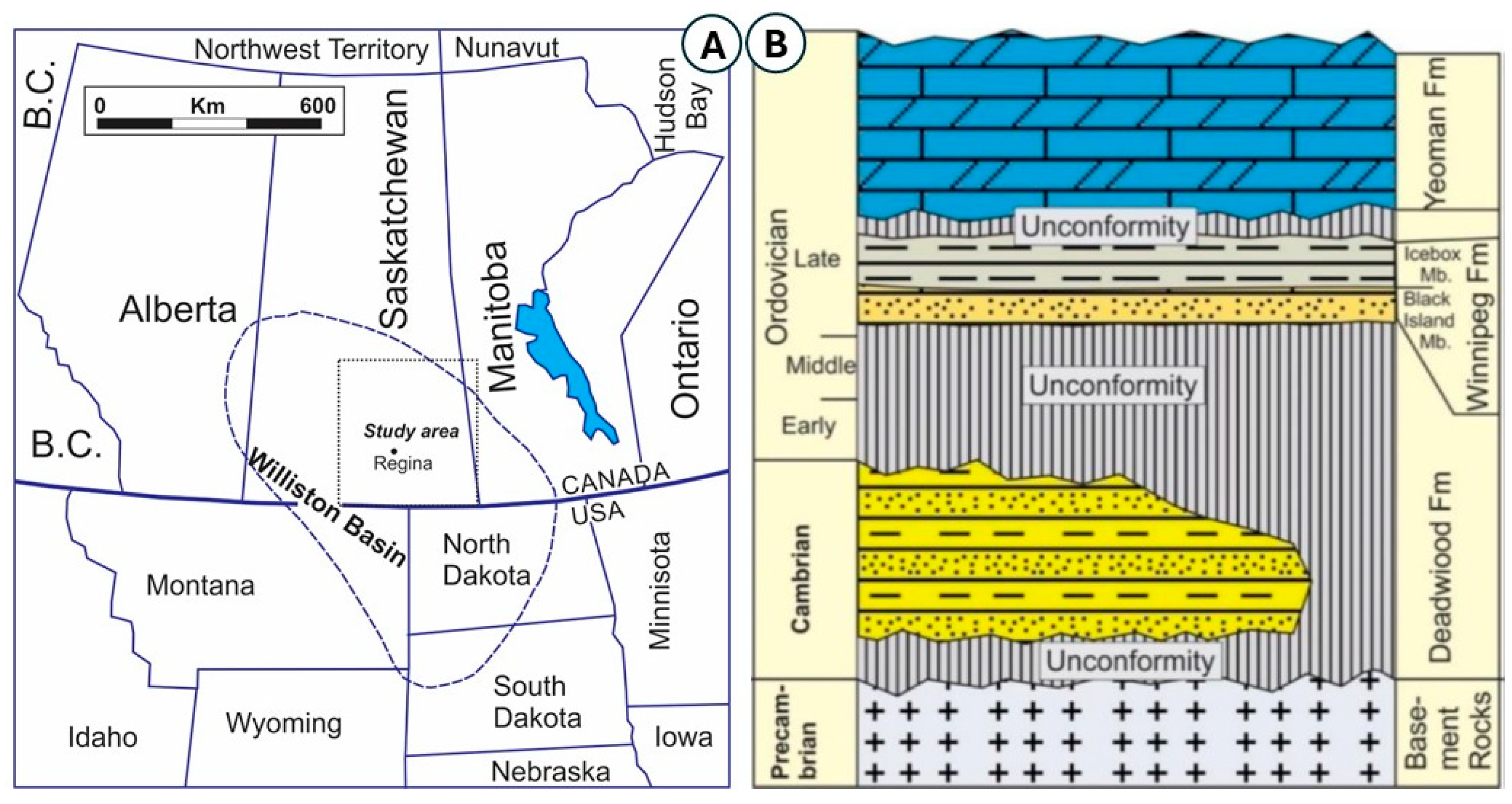
2. Materials and Methods
3. Lithology and Reservoir Properties of the BIM
3.1. Lithologic Properties
3.2. Reservoir Properties
3.3. Subsurface Porosity and Permeability Distribution
3.4. Storage Space Capacity Potential (SSCP)
- VBIM = X × Y × Z → 450 km × 500 km × 0.0316 km = 7110 km3.
- The volume of the quartz arenite portion of the member (VQA) is equal to the product of VBIM and the relative amount of quartz arenite (i.e., 47%). Thus, VQA = VBIM × 47% → 7110 km3 × 0.47 = 3341.7 km3.
- Similarly, the volume of the graywacke sandstone (VGW) is equal to the product of VBIM and the relative percentage of the graywacke facies (i.e., 44%). Thus, VGW = VBIM × 44% → 7110 km3 × 0.44 = 3128.4 km3
- The porosity volume of the quartz arenite facies (ϕVQA) is equal to the product of VQA and the average porosity percentage (i.e., 21%). Thus, ϕVQA = VQA × 21% → 3341.7 km × 21% = 702 km3.
- The porosity volume of the graywacke facies (ϕVGW) is equal to the product of VGW and the average porosity percentage of the graywacke sandstone (i.e., 8.7%). Thus, ϕVQA = VGW × 8.7%) → 3128.4 km3 × 8.7% = 272 km3.
- The total SSCP consists of the sum of the pore volume of the quartz arenite (ϕVQA) and that of the graywacke sandstone (ϕVGW). Thus, SSCP = 702 km3 + 272.2 km3 = 974 km3.
4. Conclusions
Author Contributions
Funding
Institutional Review Board Statement
Informed Consent Statement
Data Availability Statement
Conflicts of Interest
References
- Kweku, D.W.; Bismark, O.; Maxwell, A.; Desmond, K.A.; Danso, K.B.; Oti-Mensah, E.A.; Quachie, A.T.; Adormaa, B.B. Greenhouse Effect: Greenhouse gases and their impact on global warming. J. Sci. Res. Rep. 2017, 17, 1–9. [Google Scholar] [CrossRef]
- Ledley, T.S.; Sundquist, E.T.; Schwartz, S.E.; Hall, D.K.; Fellows, J.D.; Killeen, T.L. Climate changes and greenhouse gases. Eos Trans. 1999, 80, 453–458. [Google Scholar] [CrossRef]
- UNFCCC. Paris Agreement. 2015. Available online: https://unfccc.int/sites/default/files/english_paris_agreement.pdf (accessed on 12 August 2024).
- Furre, N.-K.; Eikenb, O.; Alnesa, H.; Vevatnea, J.N.; Kiæra, A.F. 20 years of monitoring CO2-injection at Sleipner. Energy Procedia 2017, 114, 3916–3926. [Google Scholar] [CrossRef]
- Dorador, J.; Buatois, L.A.; Mángano, M.G.; Rodríguez-Tovar, F.J. Ichnologic and sedimentologic analysis of the Upper Ordovician Winnipeg Formation in southeastern Saskatchewan. Summ. Investig. 2014, 1, 15. [Google Scholar]
- Iqbal, N. Sedimentologic and Lithostratigraphic Properties and Reservoir Characterization of the Winnipeg Formation, Southern Saskatchewan. Master’s Thesis, University of Regina, Regina, SK, Canada, 2023; 112p. [Google Scholar]
- Iqbal, N.; Salad Hersi, O. Sedimentologic properties and depositional setting of the Black Island Member of the Late Ordovician Winnipeg Formation, Southeastern Saskatchewan. In Proceedings of the Geoconvention, Calgary, AB, Canada, 20–22 June 2022; Available online: https://geoconvention.com/wp-content/uploads/abstracts/2022/73454-sedimentologic-properties-and-depositional-setting.pdf. (accessed on 14 August 2024).
- Oberg, R. Winnipeg conodonts from Manitoba. J. Paleontol. 1966, 40, 130–147. [Google Scholar]
- Paterson, D.F. The Stratigraphy of the Winnipeg Formation (Ordovician) of Saskatchewan; Report No. 140; Department of Mineral Resources, Geological Science Branch (Sedimentary Geology Division): Regina, SK, Canada, 1971; pp. 1–57. [Google Scholar]
- McCabe, H.R. Reservoir potential of the Deadwood and Winnipeg formations, southwestern Manitoba. Natural Resources and Environment, Mineral Resources Division. Geol. Pap. 1978, 78, 54. [Google Scholar]
- Nimegeers, A.R. Stratigraphic Relationships and Depositional Model of Mississippian Midale Beds in the Steelman-Bienfait area, Southeastern Saskatchewan. Master’s Thesis, University of Regina, Regina, SK, Canada, 2006; 132p. [Google Scholar]
- Harris, P.M.; Kendall, C.G.; Lerche, I. Carbonate cementation—A brief review. In Carbonate Cements; Schneidermann, N., Harris, P., Eds.; SEPM Special Publication: Tulsa, OK, USA, 1985; Volume 36, pp. 79–95. [Google Scholar]
- Stonecipher, S.A. Applied Sandstone Diagenesis—Practical Petrographic Solutions for A Variety of Common Exploration, Development, and Production Problems; SEPM Short Course Notes; SEPM Society for Sedimentary Geology: Tulsa, OK, USA, 2000; Volume 50, pp. 1–143. [Google Scholar]
- Westphal, H.; Eberli, G.P.; Smith, L.B.; Grammer, G.M.; Kislak, J. Reservoir characterization of the Mississippian Madison Formation, Wind River basin. Wyoming. AAPG Bull. 2004, 88, 405–432. [Google Scholar] [CrossRef]
- Salad Hersi, O.; Abbasi, I.A.; Al-Harthy, A.; El-Ghali, M.A.K. Sequence stratigraphic framework and distribution of potential reservoirs: Early Cretaceous Qishn Formation, Dhofar, Southern Oman. Arab. J. Geosci. 2024, 17, 171. [Google Scholar] [CrossRef]
- Abuamarah, B.A.; Nabawyb, B.S.; Shehatac, A.M.; Kassema, O.M.K.; Ghrefata, H. Integrated geological and petrophysical characterization of Oligocene deep marine unconventional poor to tight sandstone gas reservoir. Mar. Pet. Geol. 2019, 109, 868–885. [Google Scholar] [CrossRef]

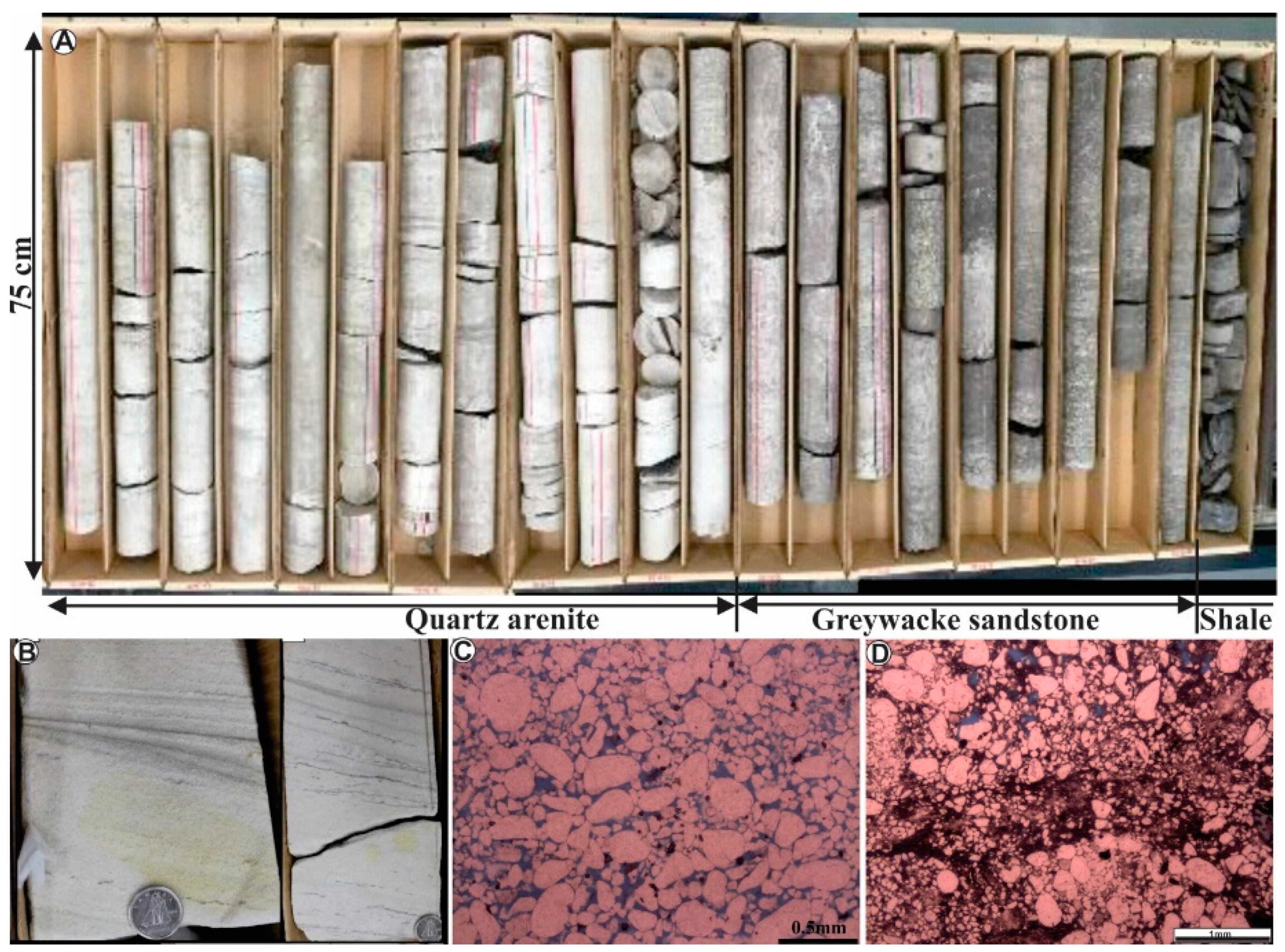
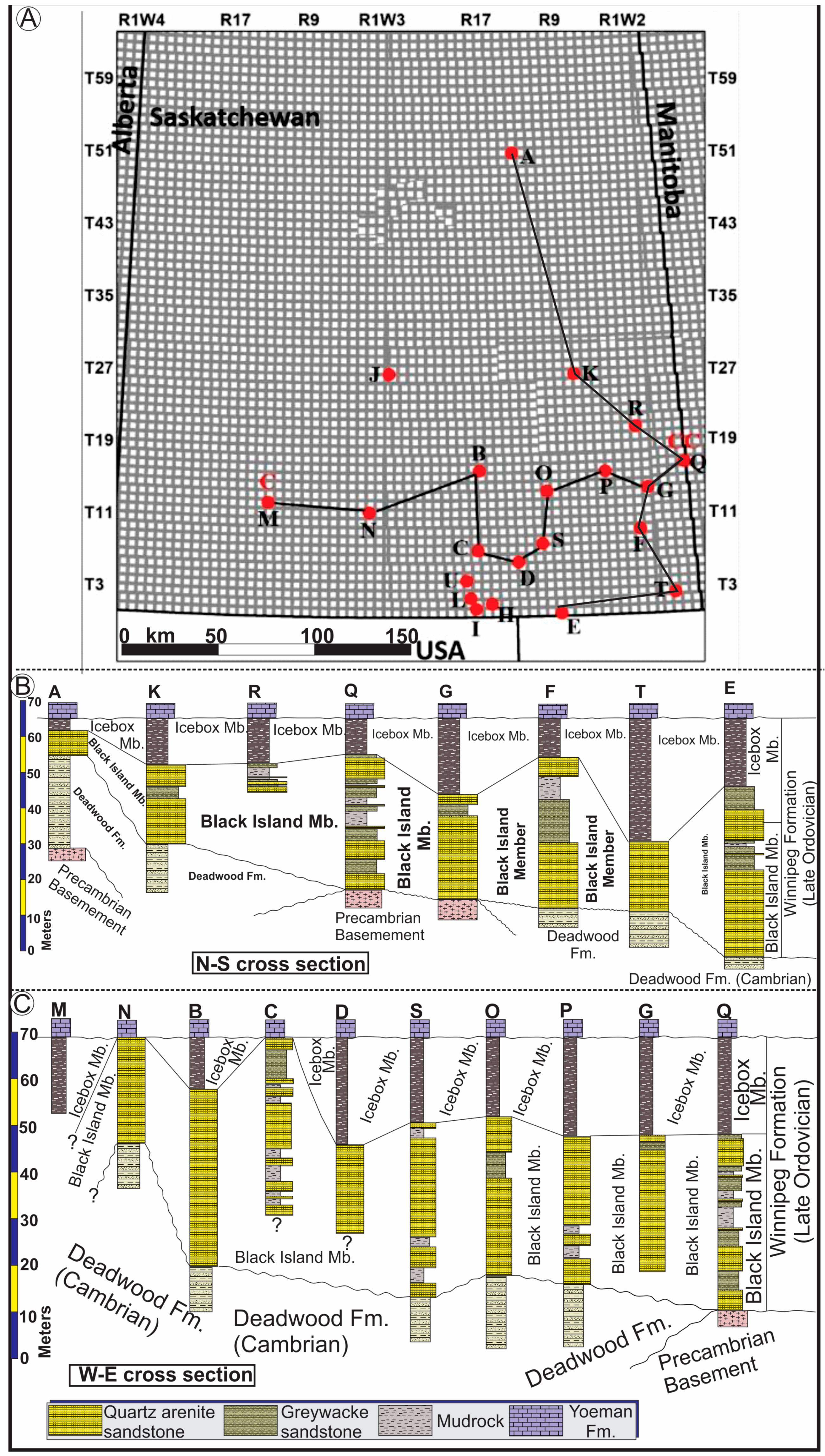
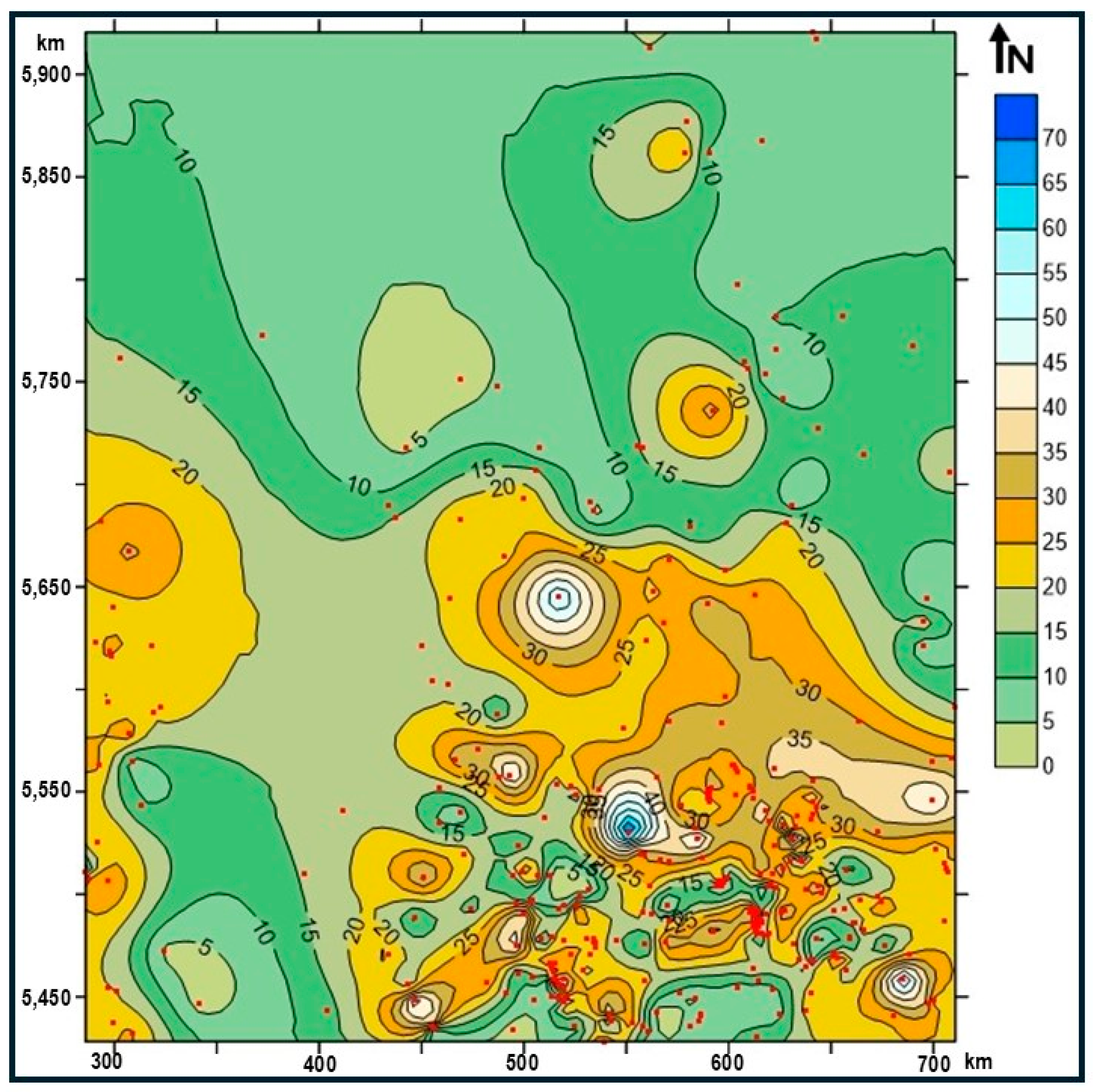
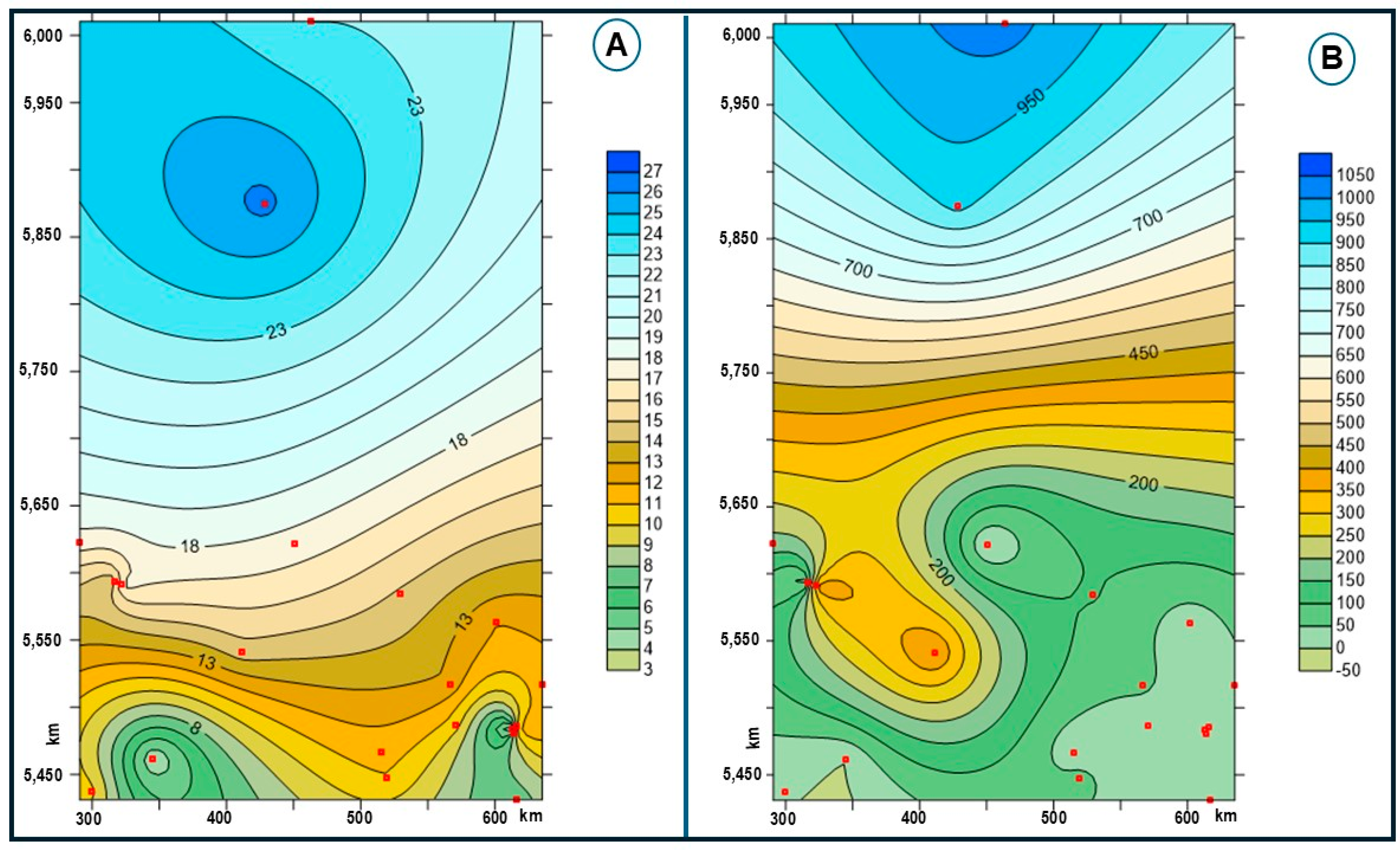

Disclaimer/Publisher’s Note: The statements, opinions and data contained in all publications are solely those of the individual author(s) and contributor(s) and not of MDPI and/or the editor(s). MDPI and/or the editor(s) disclaim responsibility for any injury to people or property resulting from any ideas, methods, instructions or products referred to in the content. |
© 2025 by the authors. Licensee MDPI, Basel, Switzerland. This article is an open access article distributed under the terms and conditions of the Creative Commons Attribution (CC BY) license (https://creativecommons.org/licenses/by/4.0/).
Share and Cite
Salad Hersi, O.; Iqbal, N. Sandstone Reservoir Characterization and Its Capacity for Subsurface CO2 Capture and Storage: A Case Study of the Black Island Member of the Winnipeg Formation, Southeastern Saskatchewan. Eng. Proc. 2024, 76, 104. https://doi.org/10.3390/engproc2024076104
Salad Hersi O, Iqbal N. Sandstone Reservoir Characterization and Its Capacity for Subsurface CO2 Capture and Storage: A Case Study of the Black Island Member of the Winnipeg Formation, Southeastern Saskatchewan. Engineering Proceedings. 2024; 76(1):104. https://doi.org/10.3390/engproc2024076104
Chicago/Turabian StyleSalad Hersi, Osman, and Naveed Iqbal. 2024. "Sandstone Reservoir Characterization and Its Capacity for Subsurface CO2 Capture and Storage: A Case Study of the Black Island Member of the Winnipeg Formation, Southeastern Saskatchewan" Engineering Proceedings 76, no. 1: 104. https://doi.org/10.3390/engproc2024076104
APA StyleSalad Hersi, O., & Iqbal, N. (2024). Sandstone Reservoir Characterization and Its Capacity for Subsurface CO2 Capture and Storage: A Case Study of the Black Island Member of the Winnipeg Formation, Southeastern Saskatchewan. Engineering Proceedings, 76(1), 104. https://doi.org/10.3390/engproc2024076104








